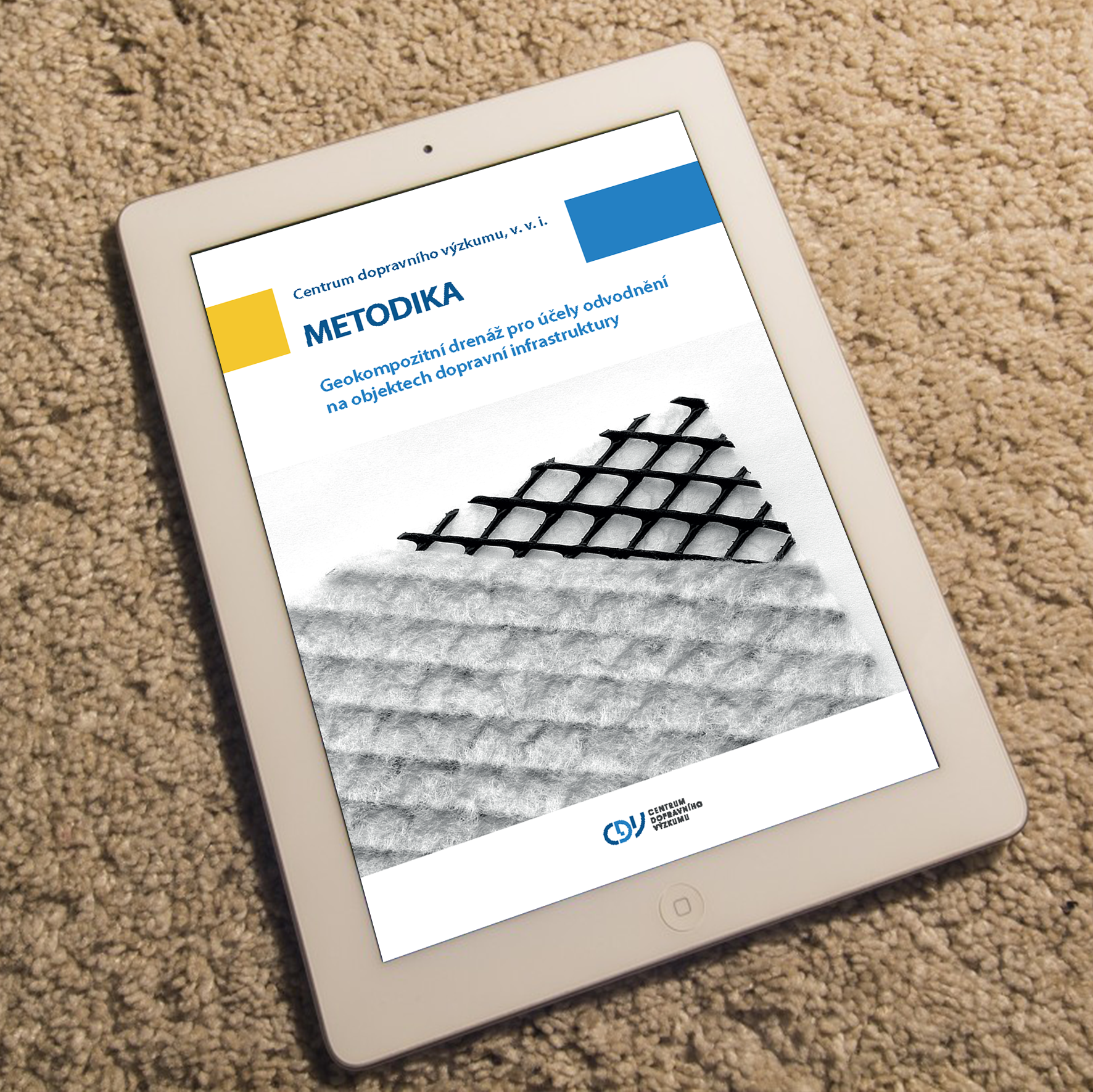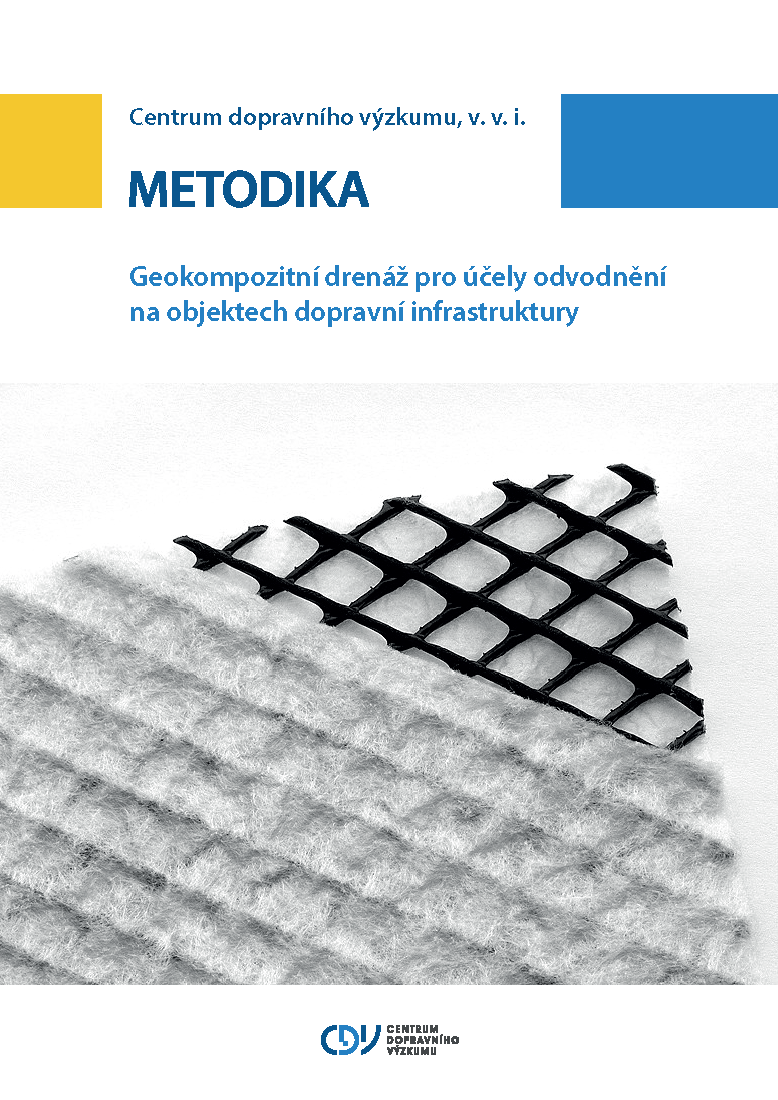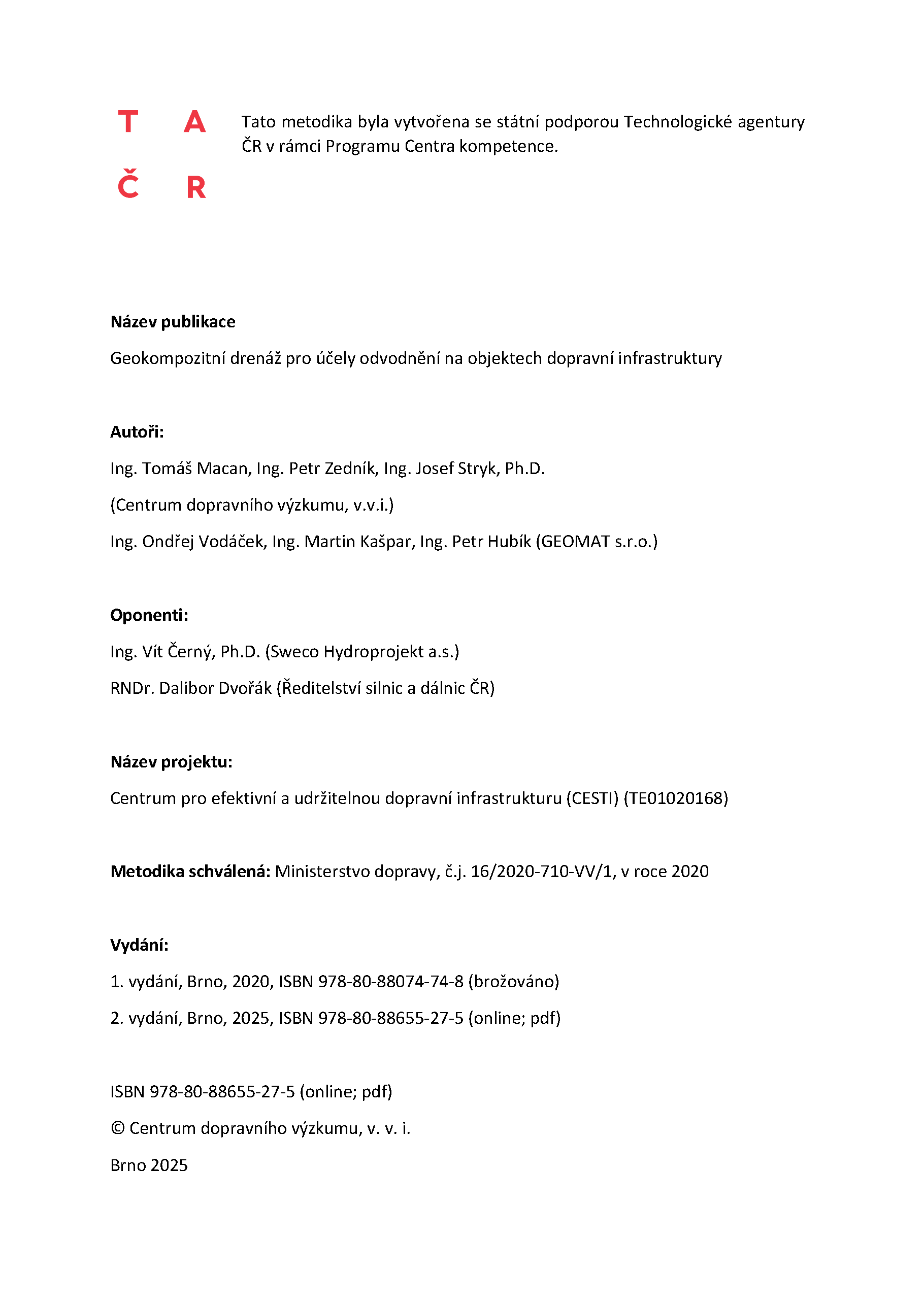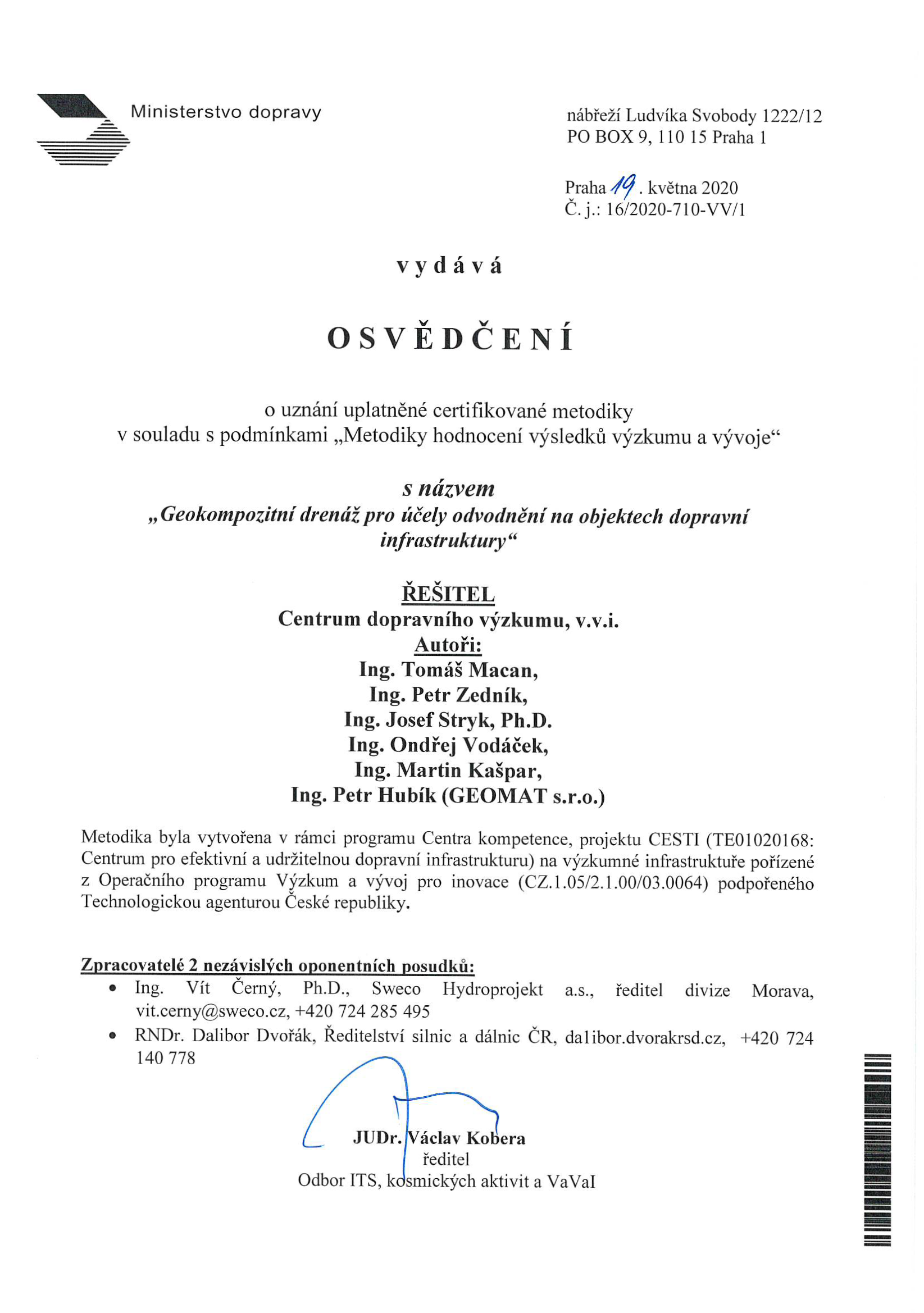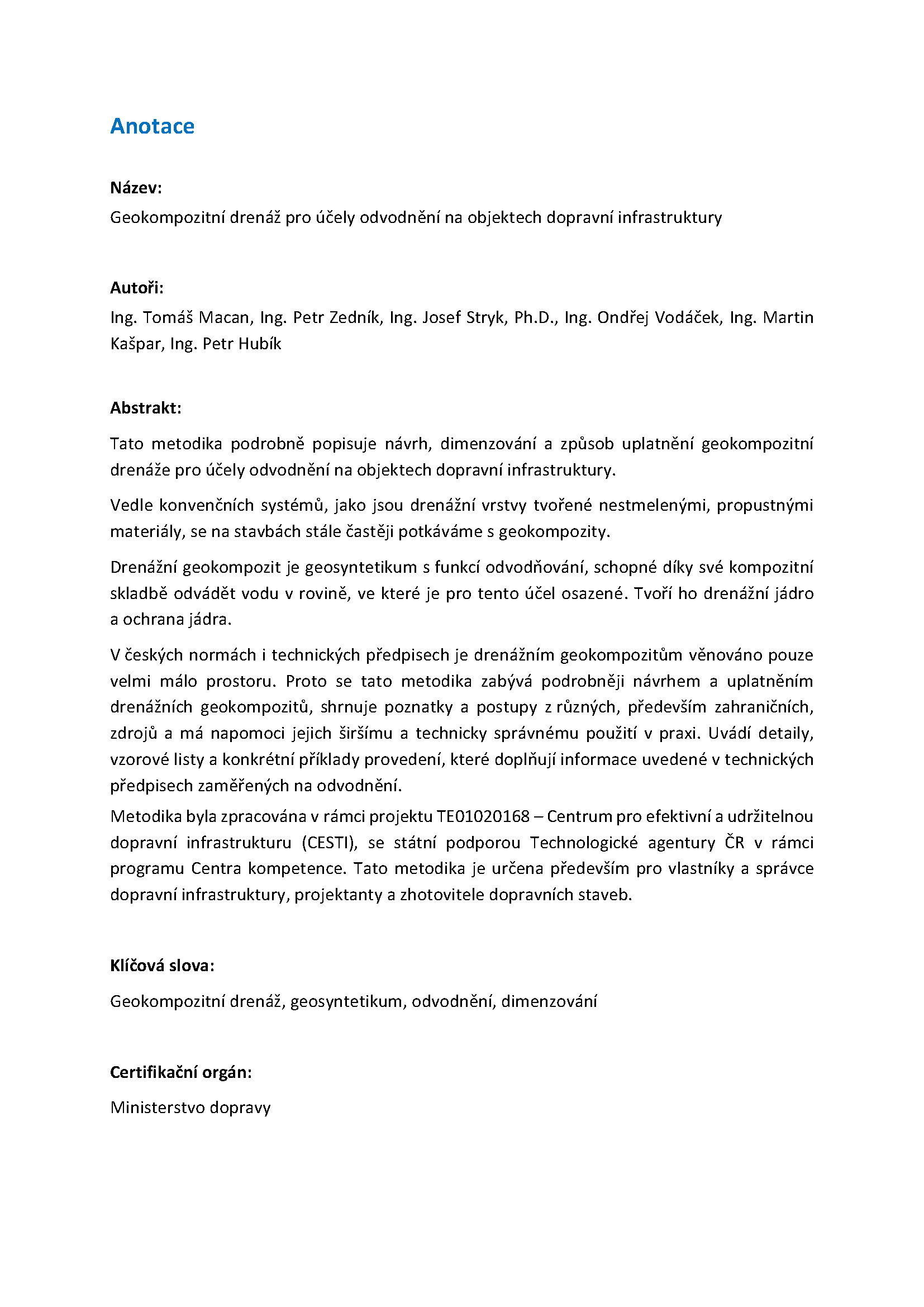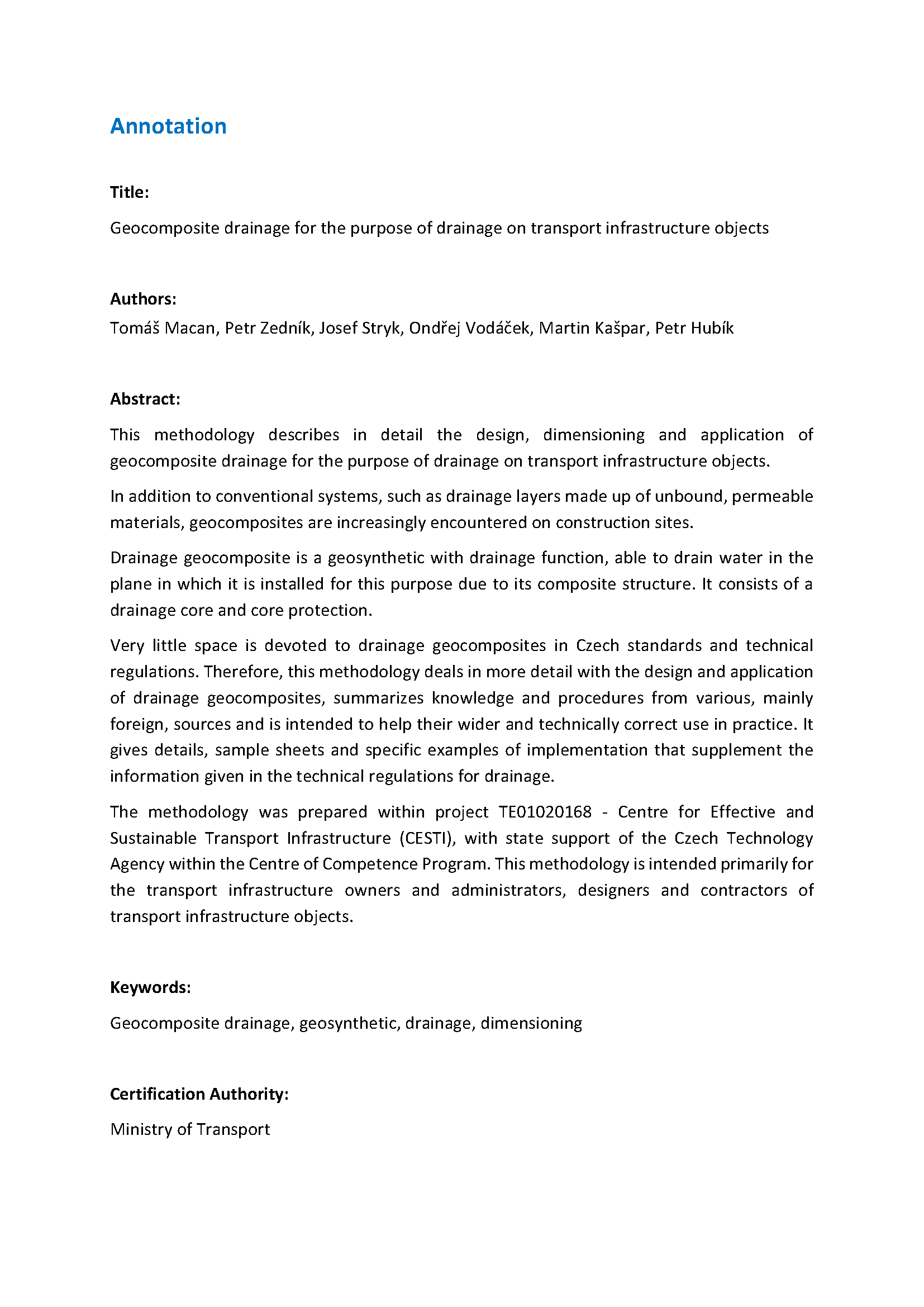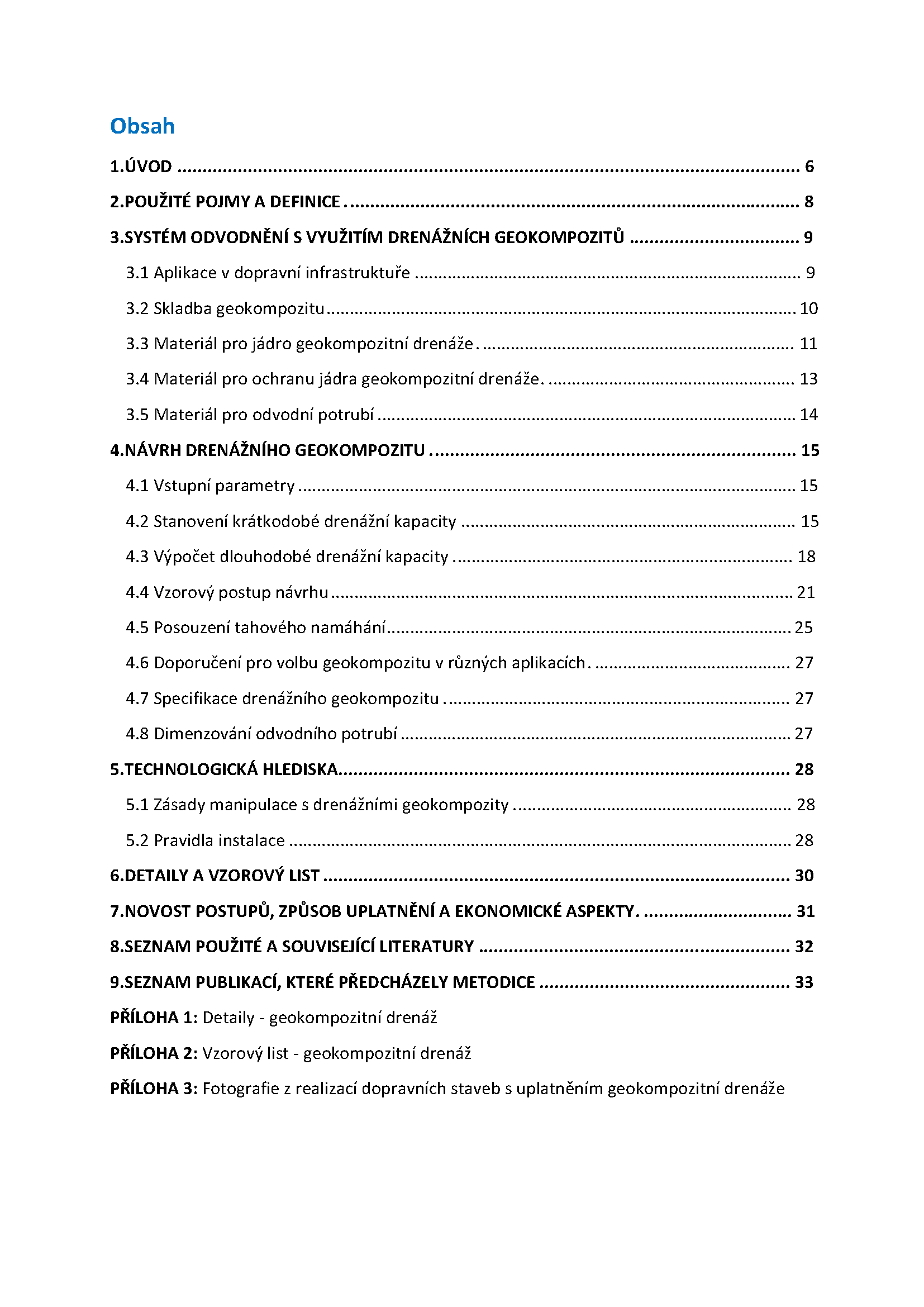E-book
Geocomposite drainage for drainage purposes on transport infrastructure objects
Geocomposite drainage for drainage purposes on transport infrastructure objects
Couldn't load pickup availability
In addition to conventional systems, such as drainage layers made of unconsolidated, permeable materials, geocomposites are increasingly encountered on construction sites. This methodology describes in detail the design, sizing and application of geocomposite drainage for drainage purposes on transport infrastructure objects.
The aim of the methodology is:
- describe geocomposite drainages, their composition and the materials used,
- specify the design, dimensioning and installation method of geocomposite drainage,
- present the possibilities of applying geocomposite drainage on transport infrastructure objects,
- provide details, sample sheets and concrete examples of execution.
This methodology was developed with the state support of the Technology Agency of the Czech Republic as part of the Center of Competence program, CESTI project (TE01020168: Center for efficient and sustainable transport infrastructure, working group WP1: Ground communication – intelligent and durable technological solutions with high technical efficiency).







Detail
Author
- Macan T.
- Mason P.
- Stryk J.
- Vodacek O.
- Kaspar M.
- Hubik P.
Content
1. Introduction
2. Terms and definitions used
3. Drainage system using drainage geocomposites
3.1 Application in transport infrastructure
3.2 Composition of geocomposite
3.3 Material for the geocomposite drainage core
3.4 Material for protecting the geocomposite drainage core
3.5 Drain pipe material
4. Design of drainage geocomposite
4.1 Input parameters
4.2 Determination of short-term drainage capacity
4.3 Calculation of long-term drainage capacity
4.4 Sample design procedure
4.5 Assessment of tensile stress
4.6 Recommendations for the choice of geocomposite in various applications
4.7 Specification of drainage geocomposite
4.8 Dimensioning of the drainage pipe
5. Technological point of view
5.1 Principles of handling drainage geocomposites
5.2 Installation Rules
6. Details and sample sheet
7. Novelty of procedures, method of application and economic aspects
Dedication
This methodology was co-financed with the state support of the Technology Agency of the Czech Republic as part of the Competence Center Program, within the framework of project TE01020168 – Center for Efficient and Sustainable Transport Infrastructure (CESTI).
www.tacr.cz
Colophon
ISBN 978-80-88655-27-5
Year of publication
2025
